Assembled here are key sources that have shaped the modern Middle East, Zionism and Israel. We have included items that give texture, perspective and opinion to historical context. Many of these sources are mentioned in the Era summaries and contain explanatory introductions.

The plan builds on previous proposals for a two-state solution to the Arab-Israeli conflict and contains a US-Israeli agreement that sets forth final borders for two states. The plan contains multiple prerequisites for Palestinian behavior before either the US or Israel might agree to Palestinian statehood as well as a proposed $50 economic development package to be allotted over a decade.

US Ambassador to Israel, David Friedman provides the most detailed Trump administration analyses of the prescribed two-state solution for terminating the Palestinian-Israeli Conflict.

Quietly pursued in the past, long-standing strategic ties between Israel and Gulf states have become public. Building on the historic Joint Agreement signed between Israel and the UAE in August 2020, the Abraham Accords serve as a framework for normalizing diplomatic relations between Israel, the UAE and Bahrain.

A week after Antony Blinken’s confirmation as Secretary of State, the Acting US Ambassador to the UN outlined with considerable detail the administration’s objective to an agreed, not imposed two-state resolution to the Palestinian-Israeli Conflict.
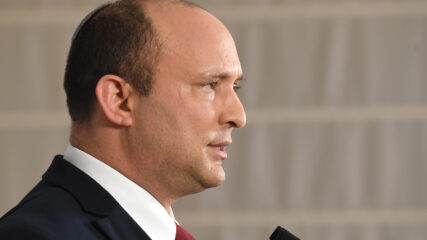
Bennett makes remarks about a new self-defense system, fears about Iran, managing the pandemic, economic growth, and Israel’s growing relationship with Middle Eastern Arab countries.
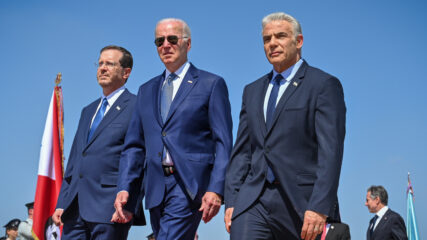
On President Joe Biden’s trip to Israel, he and Prime Minister Yair Lapid affirmed the long-term U.S.-Israel strategic relationship.
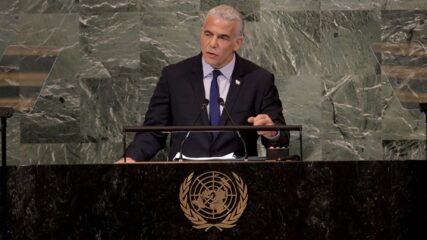
The focus of Prime Minister Yair Lapid’s first speech at the UN was a political weather report of Israel’s relations with Arab neighbors. He lauded Arab states for embracing Israel, hoped that Israel could move toward a two-state solution with the Palestinians, and blistered the hate spewing from Hamas and Iran; Israel he said, would not tolerate Iran obtaining a nuclear weapon.

In December President Herzog visited Manama, Bahrain, his fourth visit to a Middle Eastern country in 2022, (Abu Dhabi in January, Istanbul in March, Amman in June, and Sharm El-Sheikh in November), all aimed at bolstering Israel’s economic, cultural and bi-lateral relations with Arab states. Talks on this trip focused on expanding trade and sharing among others, Israel’s solar and desalinazation technologies.

In just under an hour, Herzog emphasized the special US-Israeli relationship, citing common values between the two democracies, noting, “when the US is strong, Israel is stronger. And when Israel is strong, the US is more secure.” He cited Israel’s domestic and foreign policy challenges in its 75th year.
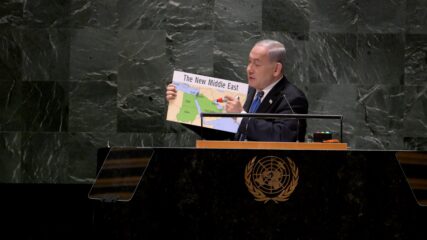
Addressing Israel’s fear of Iran’s access to nuclear weapons, the same point made by his predecessor Yair Lapid stressed in 2022 at the UN, Netanyahu like Lapid praised the Abraham Accords, noting in a quite unrestrained fashion that Israel was on the ‘cusp of a historic peace with Saudi Arabia.” The Prime Minister did mention support for a two-state solution with the Palestinians as Lapid had done previously.
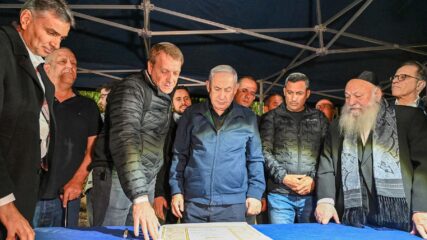
Israeli Prime minister provides minimal detail for the Gaza Strip’s post war civilian restructuring, focusing entirely on immediate and long term Israeli security needs with no imposed Palestinian state nor international negotiating intervention acceptable.
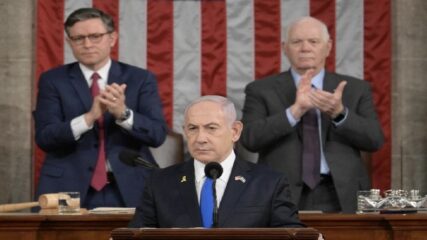
In a 52 minute speech, Netanyahu explained Israel’s absolute need for total victory in the Gaza war because Hamas and Iran were both enemies of the United States and Israel. With bi-partisan emphasis, he thanked Presidents Biden and Trump for their unwavering current and past support. Dozens of congressional members did not attend his speech, noting disagreements with the Prime Minister’s policies.

Netanyahu’s speech reflected on the needed elimination of Hezbollah as an enemy of Israel, a powerful militia fighting in Lebanon against Israel for four decades. On the day of Netanyahu’s speech, the Israeli Air Force killed Hassan Nasrallah, the Hezbollah leader in his Beirut offices along with other Hezbollah officials.

The details of the three-stage Hamas-Israel cease-fire that went into effect January 19, 2025, along with unanswered questions, insightful analyses and the relevant U.N. resolution from June 2024.

February 4, 2025 Trump Unveils Plan for U.S. Takeover of Gaza In President Donald Trump’s first meeting at the White House with a foreign leader in his second term, he welcomed Israeli Prime Minister Benjamin…
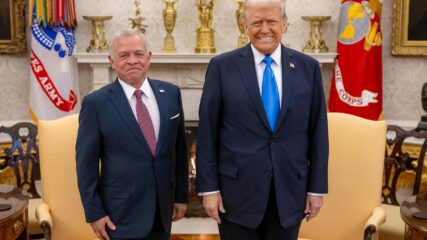
Abdullah II remains studiously noncommittal in support of Donald Trump’s idea for the U.S. to take over the Gaza Strip, rebuild it and relocate its Palestinian residents to other countries. With Jordan’s strong economic, strategic and defense ties to Washington, no one expected the king to be effusive for Trump’s suggestions for Gaza’s future. Jordan lacks the economic and demographic absorptive capacities and the political interest to take another wave of Palestinians into its territory.
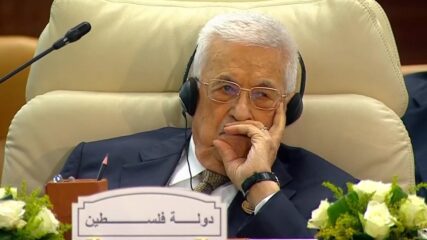
Meeting in Cairo in early March 2025, the Arab League of States endorsed an Egyptian plan for the reconstruction of Gaza that was, above all else, a cleverly worded statement. The contents did not break new diplomatic ground and made no mention of Hamas or its political future. As a consensus document, it aimed at satisfying as many Arab interests and foreign ears as possible.
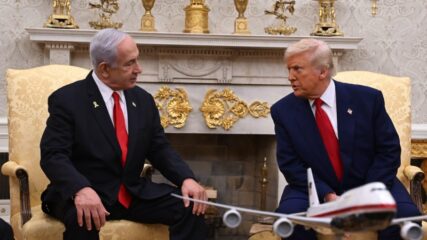
April 7, 2025 Source: Press conference during Prime Minister Benjamin Netanyahu’s visit to the White House and President Donald Trump, as broadcast by C-SPAN, April 7, 2025. U.S. President Donald Trump’s plan for new tariffs…
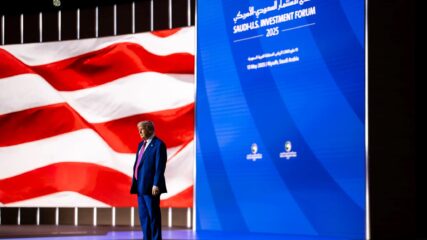
May 13, 2025 President Donald Trump’s address laying out a vision for Middle East peace and prosperity and ending sanctions on Syria at the 2025 Saudi-U.S. Investment Forum in Riyadh, Saudi Arabia, https://www.youtube.com/live/wj1QOz3iuCE?si=qQRR2GcqZhtt1F5o Well, thank…

PA President Abbas makes requests and gives promises to the French president for the establishment of a Palestinian
state. His commitments were not negotiated with Israel. They are meant to seek support for the end of the Gaza war,
the affirmation of Abbas and the PA as the sole Palestinian political address, and international support for a Palestinian state.
As in the past, the PA and Abbas seek international support to pressure Israel into undesirable political actions.
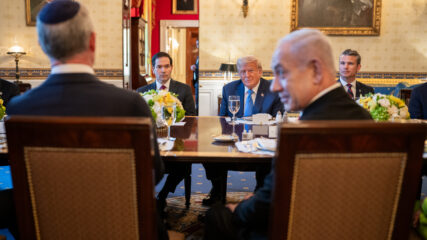
Before a White House dinner, President Trump and Prime Minister Benjamin Netanyahu talk about Gaza, Iran, Syria and Middle East peace.
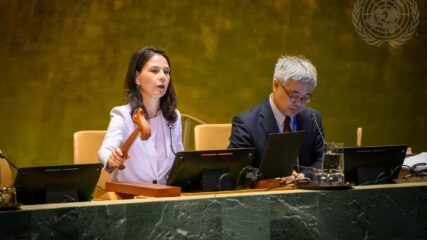
Seized by the severity of the Gaza war and nonmovement on a Palestinian-Israeli negotiating process, the U.N. offers a diplomatic road map to end the war and start negotiations. Led by France and Saudi Arabia, it asserts PA primacy as the legitimate Palestinian political representative, addresses possible Palestinian governance reform, seeks to empower a sovereign and economically viable state of Palestine living side by side in security with Israel, and contains other vague PA promises. Israel and the U.S. reject the Declaration. The Israeli government refuses to have outside parties determine the outlines or pace of negotiations with any country because negotiations impact Israeli security today and tomorrow.
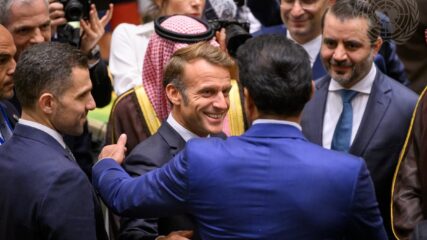
President Macron’s speech links the end of Hamas-Israeli conflict to the evolution of a of two-state solution. He acknowledges that Israel has the power to end the war and evolve a Palestinian state, asserting that if Israel does neither to the satisfaction of France and her European partners, Israel could pay an undisclosed price. He offers no such penalties to be placed on the PA for its failure to meet its commitments. Once again the Palestinian Arab national movement uses the international community to pressure Israel into concessions. On the same day, Israeli
Prime Minister Netanyahu emphatically rejects the establishment of a Palestinian state west of the Jordan River. The Israeli
parliament in June 2004 rejected any unilateral recognition of a Palestinian state by a 68-9 vote.
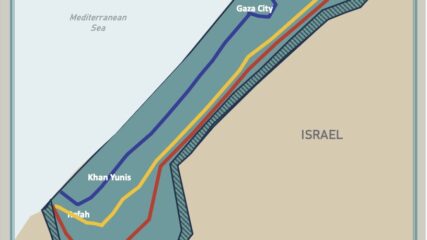
A comprehensive U.S. plan to end the Hamas-Israel war is unveiled eight days before the second anniversary of the October 7, 2023, Hamas attack.






















